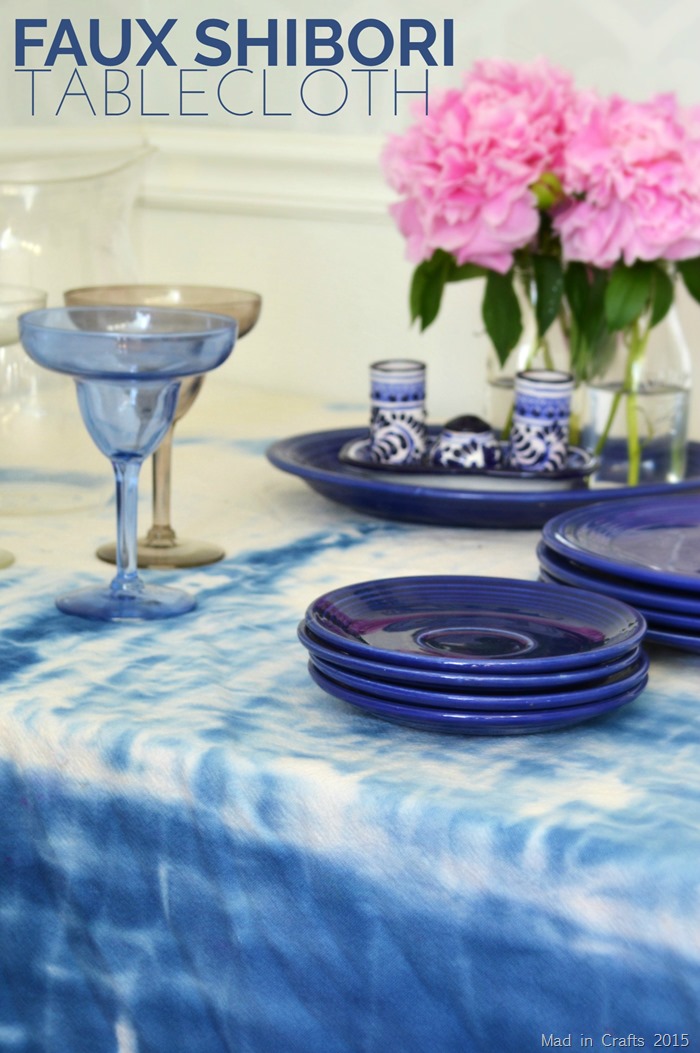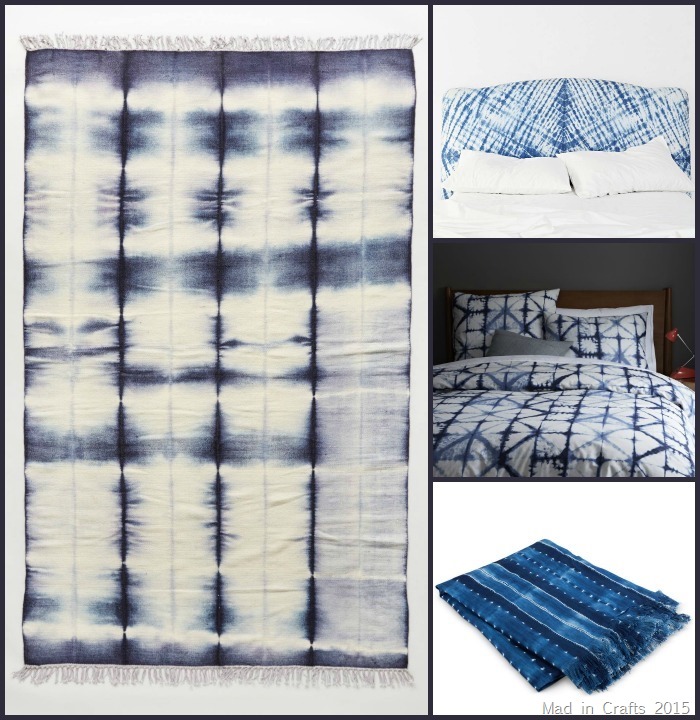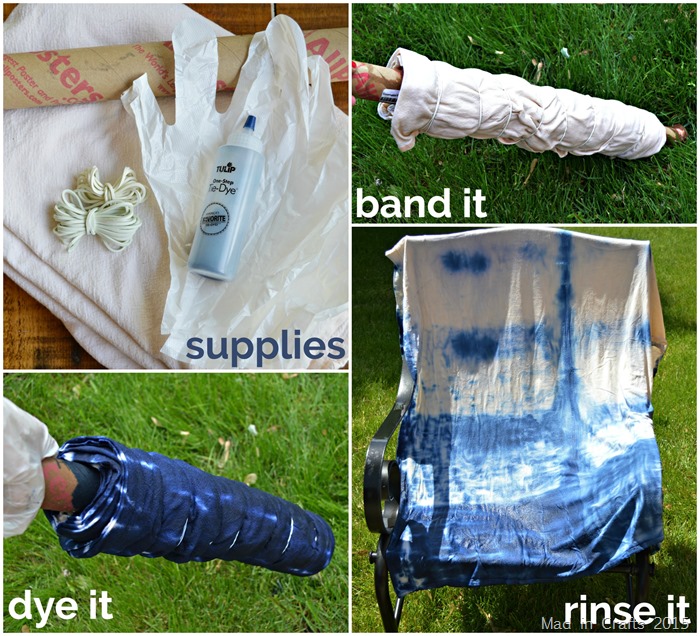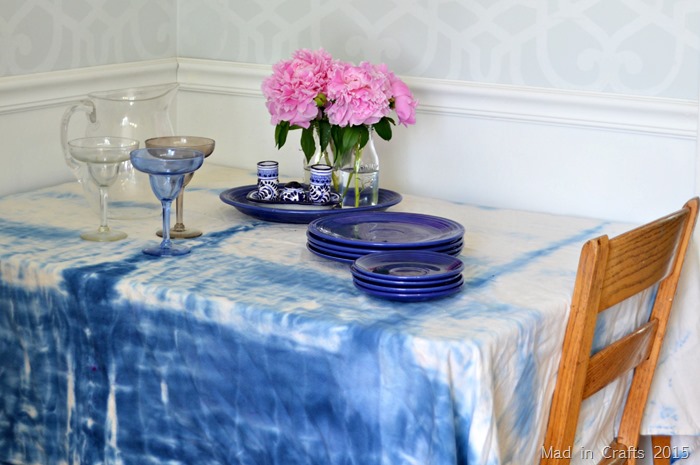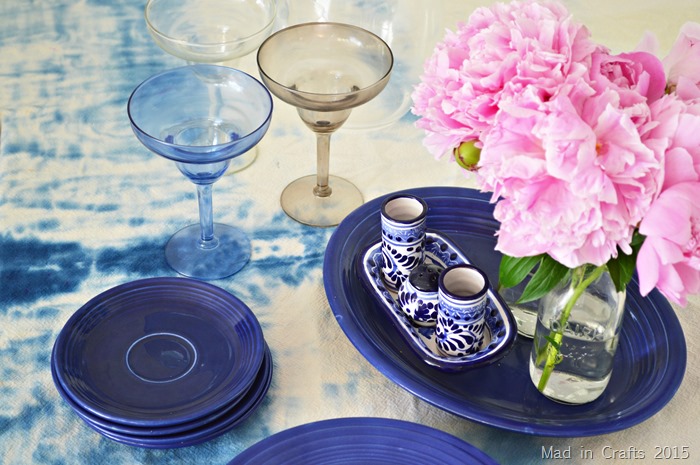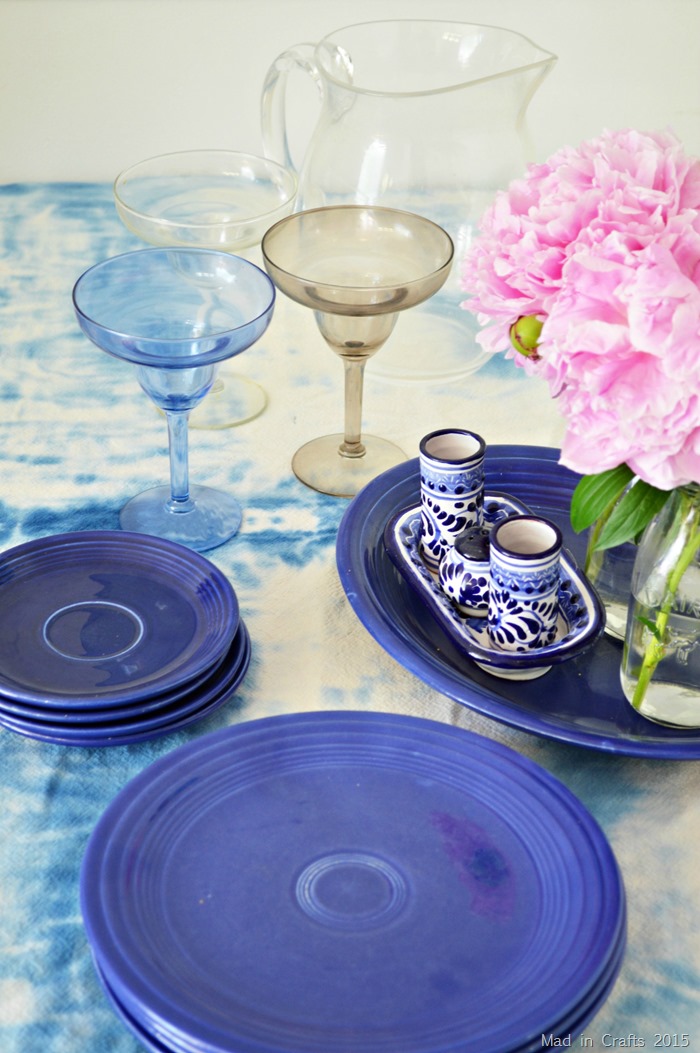Have you noticed blue tie-dye fabrics showing up in design magazines over the past year? What you are seeing is actually shibori, a Japanese dyeing technique that features intricate fabric manipulation before dyeing in indigo dye. American tie-dye can trace its roots back to ancient shibori techniques. Shibori fabrics have been in the trend spotlight for about a year now, and you can use a simplified version of the process to create a pretty tablecloth for your home.
clockwise from left: Anthropologie – Urban Outfitters – West Elm –Furbish Studios
You can use this technique on a new tablecloth, or do what I did and use it to cover up stains on an old one. If you are handy with a sewing machine, you could even purchase cheap fabric and hem it when you are finished dyeing. Just be sure whatever fabric you use is made of natural fibers, since synthetics do not take dye well.
I decided to make a shibori-style tablecloth, since the blue dye would work so well with the color scheme I have created in there.
Watch this short video to see how I made my tablecloth, or scroll down for step-by-step tutorial. Subscribe to my YouTube channel for more creative videos like this!
To make my tablecloth, I used an old cotton tablecloth that had seen better days, dark blue Tulip tie dye, strong rubber bands, and plastic gloves. You will also need some kind of long cylinder. I used a sturdy tube mailer, but PVC pipe would have worked much better. If you purchase Tulip’s shibori kit, it contains the dye, cylinder, gloves, and rubber bands. If I hadn’t already had some of their blue dye on hand, I would have bought the kit myself.
Start by wetting the tablecloth totally and then folding it lengthwise three or four times. Wrap the folded tablecloth around the cylinder. The bottom-most layer (the layer closest to the tube) will get the least amount of exposure to the dye, while the top-most layer will have the most.
Wrap rubber bands around the fabric down the length of the cylinder. You might need to place the rubber bands near the end of the cloth and then scoot some more towards the middle, so that you do not snap all your rubber bands. Experience talking, friends.
After you have the rubber bands on the fabric, scrunch the fabric together, creating folds where the rubber bands cinch the fabric. This is where PVC would have been helpful. My fabric didn’t scrunch well because there was too much friction from the wet cardboard mailer. The deeper the folds, the more distinct your tablecloth markings will be.
Traditional shibori uses indigo dye which needs to be boiled, applied, and exposed to oxygen to achieve the dark blue color. My tie dye kit came with a squeeze bottle that contained the blue dye powder. All I had to do was add water, shake it, and squirt the dye onto the fabric. Way less mess! I’ve used the Tulip tie dye kits for other projects in the past, and I will never go back to old school tie dye.
I placed my shibori set up in a clean garbage bag and left the dye to work its magic overnight.
The next day, I carefully snipped off the rubber bands, unfurled the tablecloth, and gave it a good rinse with my hose. Look at the pretty results! The portion of the tablecloth near the top of the chair was the section closest to the cardboard tube, so there is less dye there. After I rinsed my tablecloth until the water ran clear, I put it in the washing machine for a cycle and the dryer for a cycle.
You can even leave the tablecloth un-ironed since it has a very casual, breezy vibe anyway. You’ll see the gradient of color once the cloth is laid out on the table — the natural result of folding the cloth before wrapping it around the cylinder.
Set your summery table with plates and glasses in similarly saturated colors to complete the bold, summer look.
This technique could also be used on sheets, duvets, cloth napkins and curtains so you can give every room in your house a light, airy update with just a bit of dye.
I have put together a list of the supplies I used for this project. These are affiliate links, so if you purchase after clicking I will receive a small commission. Thanks!

